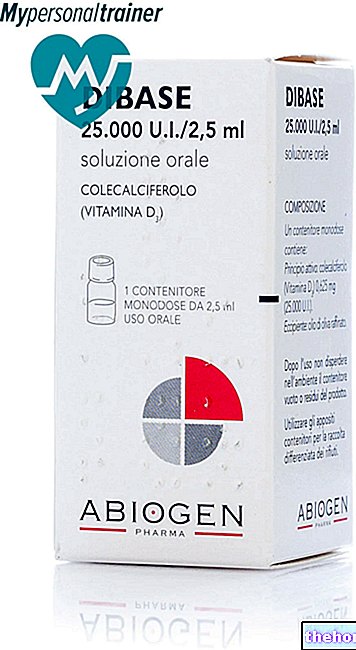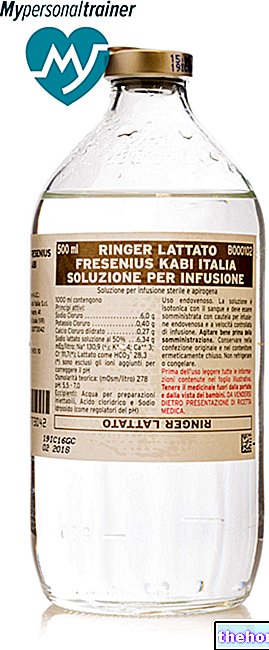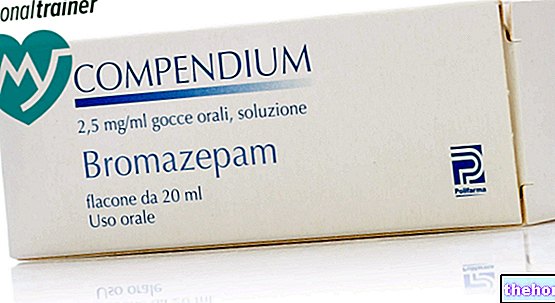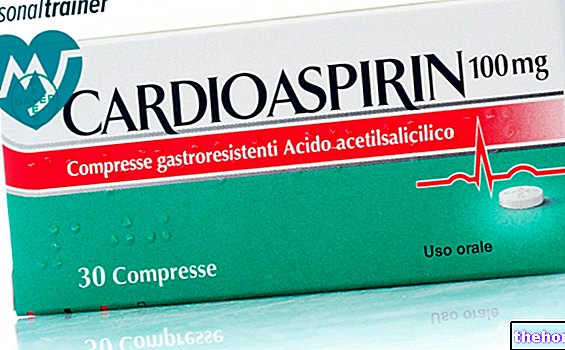Active ingredients: Gentamicin (gentamicin sulfate)
GENTALYN 0.1% cream
GENTALYN 0.1% ointment
Gentalyn package inserts are available for pack sizes: - GENTALYN 0.1% cream, GENTALYN 0.1% ointment
- GENTALYN 80 mg / 2 ml solution for injection, GENTALYN 40 mg / 1 ml solution for injection
Why is Gentalyn used? What is it for?
PHARMACOTHERAPEUTIC CATEGORY
Gentamicin, a broad-spectrum antibiotic, is an effective topical treatment in primary and secondary bacterial infections of the skin.
THERAPEUTIC INDICATIONS GENTALYN cream and GENTALYN ointment are indicated in primarily bacterial inflammatory skin forms such as pyoderma of varying severity and extent, including ecthyma, folliculitis, sycosis, furunculosis, microbial eczema, as well as in secondary infected forms such as dermatitis and impetiginized eczema, stasis ulcers, traumatic injuries, burns and infected abrasions.
Other skin diseases that benefit from the application of GENTALYN are acne and pustular psoriasis, intertriginoid forms and perionyses of bacterial origin. In fungal forms, GENTALYN for topical use is ineffective, as gentamicin is not active on any strain of fungi; the drug has however useful application in bacterial superinfections of fungal and viral infections.
The two preparations of the product, cream and ointment, lend themselves to making a topical treatment particularly suitable depending on the degree of inflammation and exudation of the lesion in progress: while the GENTALYN cream is particularly indicated in acute forms in the exudative phase, in the so-called forms "dry" with desquamative component (lichenified microbial eczema) GENTALYN ointment is better suited.
Particular efficacy has been demonstrated by the preparation in burns of various degrees and extent in which the "mortification of the soil" implemented by the exceptional intensity of the thermal insult, favors the development of a particularly virulent bacterial flora.
Contraindications When Gentalyn should not be used
Hypersensitivity to the active substance or to any of the excipients.
Precautions for use What you need to know before taking Gentalyn
The preparation cannot be used for ophthalmic use.
Systemic absorption of topical gentamicin increases if large areas of the body are treated, especially if skin damage is present, or if treatment is planned for a long time. In such situations, undesirable effects may occur which occur with use. systemic of gentamicin.
Therefore appropriate precautions should be taken especially with infants and children.
Interactions Which drugs or foods can modify the effect of Gentalyn
None known until now.
Tell your doctor or pharmacist if you have recently taken any other medicines, even those without a prescription.
Warnings It is important to know that:
The use, especially if prolonged, of products for topical use can give rise to sensitization phenomena. In this case, treatment must be interrupted and suitable therapy instituted. As with all antibiotics, treatment with gentamicin can cause an overdevelopment of microorganisms insensitive, including fungi; in this case or if it develops irritation, sensitization or superinfection, treatment must be suspended and appropriate therapy instituted.Gentalyn cream and Gentalyn ointment are not active in skin infections caused by viruses and fungi.
Cross allergenicity between aminoglycosides has been demonstrated.
As with other aminoglycosides, simultaneous and / or sequential systemic or topical administration of other nephrotoxic and / or neurotoxic drugs should be avoided. When used in conjunction with systemic therapy, the possibility of an increase in serum levels should be taken into account.
Pregnancy and breastfeeding
In pregnant women and in very early childhood, the product should be administered in cases of real need and under the direct supervision of the doctor.
As the safety of Gentalyn in pregnant women has not been fully established, this medicine should not be used in pregnant women in large quantities or for prolonged periods of time.
Effects on ability to drive and use machines
No effect.
Dosage and method of use How to use Gentalyn: Dosage
Apply the preparation, both in cream and in the form of ointment, 3-4 times a day until the first results are achieved, after which the number of dressings can be reduced to 1- 2 in 24 hours.
It will be good, after the application, to protect the part with sterile gauze.
In pyoderma it is better to start with GENTALYN ointment which, thanks to its emollient power, favors the detachment of serum-blood crusts; once the lesions have been cleaned, you can continue with GENTALYN cream which does not necessarily require a protective bandage.
In burns, whether of I, II or III degree, the GENTALYN ointment is more indicated, given the extreme sensitivity of the burned surfaces and the presence of necrotic material which, by virtue of the emollient power of the ointment, is removed more easily
Overdose What to do if you have taken too much Gentalyn
A single overdose of gentamicin is not expected to produce symptoms.
Excessive or prolonged use of gentamicin for local treatment can lead to increased lesions caused by insensitive fungi or bacteria.
In the case of development of insensitive fungi or bacteria, appropriate therapy with antifungals or antibacterials is indicated.
Side Effects What are the side effects of Gentalyn
In clinical experiences, Gentalyn for topical use was well tolerated.
Treatment with gentamicin sometimes produced transient irritation (erythema or pruritus) which usually did not require discontinuation of therapy.
Following the use of gentamicin, manifestations of contact allergy are possible.
Report any undesirable effect not described in this leaflet to your doctor or pharmacist.
Expiry and Retention
Expiry: see the expiry date printed on the package. The expiry date indicated refers to the product in intact packaging, correctly stored.
Warning: do not use the medicine after the expiry date shown on the package.
After first opening, Gentalyn cream and Gentalyn ointment are valid for 3 months. Medicines should not be disposed of via wastewater or household waste.
Ask your pharmacist how to throw away medicines you no longer use. This will help protect the environment. Keep this medicine out of the reach and sight of children.
COMPOSITION
GENTALYN 0.1% CREAM:
100 g contain: Active ingredient: Gentamicin sulphate 0.166 g. Excipients: chlorocresol, polyethylene glycol monocethyl ether (Cetomacrogol 1000), cetostearyl alcohol, white petroleum jelly, liquid paraffin, monobasic sodium phosphate, purified water.
GENTALYN 0.1% OIL:
100 g contain: Active ingredient: Gentamicin sulphate 0.166 g. Excipients: liquid paraffin, white petroleum jelly.
PHARMACEUTICAL FORM AND CONTENT
GENTALYN cream tube of 30 g
GENTALYN ointment tube of 30 g.
Source Package Leaflet: AIFA (Italian Medicines Agency). Content published in January 2016. The information present may not be up-to-date.
To have access to the most up-to-date version, it is advisable to access the AIFA (Italian Medicines Agency) website. Disclaimer and useful information.
01.0 NAME OF THE MEDICINAL PRODUCT
GENTALYN
02.0 QUALITATIVE AND QUANTITATIVE COMPOSITION
Gentalyn 0.1% cream:
100 g cream contain:
active ingredient: gentamicin sulfate 0.166 g.
For the full list of excipients, see section 6.1.
Gentalyn 0.1% ointment:
100 g ointment contain:
active ingredient: gentamicin sulfate 0.166 g.
For the full list of excipients, see section 6.1.
03.0 PHARMACEUTICAL FORM
Cream and ointment.
04.0 CLINICAL INFORMATION
04.1 Therapeutic indications
Gentalyn cream and Gentalyn ointment are indicated in primarily bacterial inflammatory skin forms such as pyoderma of varying severity and extent, including ecthyma, folliculitis, sycosis, furunculosis, microbial eczema, as well as in secondary infected forms such as dermatitis and impetiginized eczemas, stasis ulcers, traumatic injuries, burns and infected abrasions.
Other skin diseases that benefit from the application of Gentalyn are acne and pustular psoriasis, intertriginoid forms and perionyses of bacterial origin. In the fungal forms, Gentalyn for topical use is ineffective, as gentamicin is not active on any strain of fungi; the drug has however useful application in bacterial superinfections of fungal and viral infections.
The two preparations of the product, cream and ointment, lend themselves to making a topical treatment particularly suitable according to the degree of inflammation and exudation of the lesion in progress: while the Gentalyn cream is particularly indicated in acute forms in the exudative phase, in the so-called forms "dry" with desquamative component (lichenified microbial eczema) Gentalyn ointment is best suited.
Particular efficacy has been demonstrated by the preparation in burns of various degrees and extent, in which the "mortification of the soil", implemented by the exceptional intensity of the "thermal insult, favors the development of a particularly virulent bacterial flora.
04.2 Posology and method of administration
Apply the preparation, both in cream and in the form of ointment, 3-4 times a day until the first results are achieved, after which the number of dressings can be reduced to 1-2 in 24 hours.
It will be good, after the application, to protect the part with sterile gauze.
In pyoderma it is better to start with Gentalyn ointment which, thanks to its emollient power, favors the detachment of seroematic crusts; once the lesions have been cleaned, you can continue with Gentalyn cream which does not necessarily require a protective bandage.
In burns, whether of I, II or III degree, Gentalyn ointment is more indicated, given the extreme sensitivity of the burned surfaces and the presence of necrotic material which, by virtue of the emollient power of the ointment, is removed more easily.
04.3 Contraindications
Gentalyn is contraindicated in patients with a history of hypersensitivity to the active substance or to any of the excipients.
04.4 Special warnings and appropriate precautions for use
The use, especially if prolonged, of products for topical use can give rise to sensitization phenomena. In this case it is necessary to interrupt the treatment and institute a suitable therapy.
The preparation cannot be used for ophthalmic use.
Systemic absorption of topical gentamicin increases if large areas of the body are treated, especially if skin damage is present, or if treatment is planned for a long time. In such situations, undesirable effects may occur which occur with use. systemic of gentamicin. Therefore, appropriate precautions should be taken in the use of the medicinal product especially with infants and children. As with all antibiotics, treatment with gentamicin can lead to an overdevelopment of insensitive microorganisms, including fungi; in this case or if irritation, sensitization or irritation develops. superinfection, treatment must be suspended and appropriate therapy instituted Gentalyn cream and Gentalyn ointment are not active in skin infections caused by viruses and fungi.
Cross allergenicity between aminoglycosides has been demonstrated.
As with other aminoglycosides, simultaneous and / or sequential systemic or topical administration of other nephrotoxic and / or neurotoxic drugs should be avoided.
When used in conjunction with systemic therapy, the possibility of an increase in serum levels should be taken into account.
04.5 Interactions with other medicinal products and other forms of interaction
None known until now.
04.6 Pregnancy and lactation
In pregnant women and in very early childhood, the product should be administered in cases of real need and under the direct supervision of the doctor.
As the safety of Gentalyn in pregnant women has not been fully established, this medicine should not be used in pregnant women in large quantities or for prolonged periods of time.
04.7 Effects on ability to drive and use machines
No effect.
04.8 Undesirable effects
In clinical experiences, Gentalyn for topical use was well tolerated.
Treatment with gentamicin sometimes produced a transient irritation (erythema or pruritus) which usually did not require the interruption of therapy. In these subjects the patch test conducted subsequently did not show phenomena of irritation and sensitization.
Following the use of gentamicin, manifestations of contact allergy are possible.
04.9 Overdose
A single overdose of gentamicin is not expected to produce symptoms.
Excessive or prolonged use of gentamicin for local treatment can lead to increased lesions caused by insensitive fungi or bacteria.
In the case of development of insensitive fungi or bacteria, appropriate therapy with antifungals or antibacterials is indicated.
05.0 PHARMACOLOGICAL PROPERTIES
05.1 Pharmacodynamic properties
Pharmacotherapeutic group: antibiotic for topical use.
ATC code: D06AX07.
Gentamicin is produced by the fermentation of Micromonospora purpurea and is obtained as a white amorphous powder, soluble in water and stable in the heat. This broad-spectrum antibiotic isolated in Schering Corporation's Research Laboratories has been shown to be highly effective in the topical treatment of primary and secondary bacterial skin infections.
Bacteria sensitive to gentamicin include Staphylococcus aureus (coagulase positive, coagulase negative and penicillinase producing strains) and Gram negative bacteria (Pseudomonas aeruginosa, Aerobacter aerogenes, Escherichia coli, Proteus vulgaris and Klebsiella pneumoniae).
The results of the skin reaction tests carried out in the clinic have shown that gentamicin is not a primary irritant; moreover, gentamicin has a low skin sensitization index.
05.2 Pharmacokinetic properties
Transcutaneous absorption of gentamicin from Gentalyn cream and ointment is usually absent.
05.3 Preclinical safety data
Acute toxicity studies in mice, using gentamicin in aqueous solution, gave the following LD50: subcutaneous 485 mg / kg, endoperitoneum 430 mg / kg, intravenous 75 mg / kg, oral> 9050 mg / kg. Experiences conducted on animals and humans with preparations at concentrations of antibiotics much higher than the therapeutic ones, have not shown any signs of primary irritation or sensitization phenomena.
Epicutaneous tests performed in 100 patients gave negative results in each case. Gentamicin does not have structural analogies with compounds with an established carcinogenic action. In chronic toxicity studies and during clinical trials, it has never shown phenomena capable of suggesting carcinogenic potential.
06.0 PHARMACEUTICAL INFORMATION
06.1 Excipients
Cream: liquid paraffin; white petroleum jelly; chlorocresol; polyethylene glycol monocethyl ether (Cetomacrogol 1000); cetostearyl alcohol; monobasic sodium phosphate; purified water.
Ointment: liquid paraffin; white petroleum jelly.
06.2 Incompatibility
To date, no incompatibility with other drugs is known.
06.3 Period of validity
2 years cream; ointment 3 years.
After first opening: cream and ointment 3 months.
06.4 Special precautions for storage
This medicinal product does not require any special storage conditions.
06.5 Nature of the immediate packaging and contents of the package
Cream, 30 g tube
Ointment, 30 g tube
06.6 Instructions for use and handling
No special instructions.
07.0 MARKETING AUTHORIZATION HOLDER
MSD Italia S.r.l.
Via Vitorchiano, 151
00189 Rome
Sales dealer:
ESSEX Italia S.r.l.
Via Vitorchiano, 151
00189 Rome
08.0 MARKETING AUTHORIZATION NUMBER
Gentalyn 0.1% cream AIC n. 020891077
Gentalyn 0.1% ointment AIC n. 020891065
09.0 DATE OF FIRST AUTHORIZATION OR RENEWAL OF THE AUTHORIZATION
26 July 1968/01 June 2010
10.0 DATE OF REVISION OF THE TEXT
December 2012




























